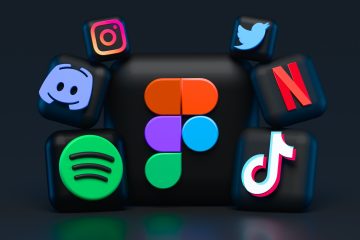Social media has become the new main medium for marketing. Larger reach than TV and outdoors, more dot-proof than addressed direct advertising, ridiculously more opportunities to test, measure and analyze than print and more engaging and democratic than all other media channels together.
Facebook has grown into a global media monster who eats traditional media houses for breakfast. In fact, several media houses around the world today are resellers to both Facebook and Google.
In other words, it’s no wonder that advertisers are focusing more and more of their marketing efforts on the social media channels. Those who do well gain market share and those who do less lose land. It has never been more relevant for companies to learn how to use social media for their marketing.
Contents
1. How to track who says what about your brand online
Keeping track of how many people talk about your business is important, but at the same time, it can provide very good insights to know what your customers actually say about your business.
Mention is not only a good tool for saving negative reviews, but also a great way to find ambassadors for your brand. In addition to easy-to-see statistics, a handy feature is that you can get notifications immediately when someone engages with your brand.
2. Track which campaigns generate the most traffic to your site
UTM tag your links to measure where your traffic comes from in Google Analytics. This means that you can not only know the source of the traffic, but also direct it to a specific post or specific ad on social media.
Was it the Christmas campaign that generated traffic or was it a different camopaign? It can also be used as an A / B test between which campaign generated the traffic.
3. Be sure to compare equivalent variables
Another important point to take into account is the fact that one should never compare data between different platforms or analysis tools. A good thing to know is that the different platforms measure video views in different ways – the criteria for video views on Facebook are not the same as the criteria video views on eg Youtube.
So in addition to the platforms being used in different ways by the users, one should be careful as a marketer to evaluate which payment model benefits your business best.
4. Tools for tracking customer journeys from online to physical store
Many companies still separate their offline and online business in terms of marketing, budgets and more.
Even though more and more progressive companies understand that online and offline are closely intertwined, a major problem has been how to know for sure how they affect each other.
Now with Facebook Offline Conversations opens up a lot of opportunities in the field – through GPS and Wifi it is possible to track whether customers who are in a physical store have been exposed by your online marketing (provided they have Facebook running in the background).
You can also send targeted advertising messages via Facebook or Instagram to this target group. This way, you gain more control over how customers are affected by your messages in social media.
5. Snapchat – incredibly popular, but hard to measure
Nobody has probably missed Snapchat‘s upswing in the market, but how do marketers keep up with this difficult-to-measure platform? It is important to adapt analysis and measurement to the platform’s character and behavior, which is extra difficult on Snapchat.
Why this is complicated is because the ad format requires an active click from a user and that the posts disappear after a while unlike other social platforms. A Danish startup takes on the difficult task of analyzing Snapchat ads by measuring engagement through screenshots, how long the user is watching and whether the user is following the company.
6. When is it best to post on social media?
There are many studies that show that some times are better than others for sharing content in social media. How do we know when is the best time for your post? When are users most active and engaged? Neil Patel thinks you can learn from studies, but most important is to constantly test A / B and analyze how your target group is interacting with your content and trying to develop it.
7. Schedule your posts in social media
Have you ever felt that you didn’t want to post your content right away, but at the same time not the desire to sit down later tonight and formulate yourself?
Then do like many other professionals and schedule your entries in advance! There is a wealth of different tools to do this but we recommend Buffer which is one of the most popular. Worth knowing is that since Instagram does not allow other applications to post to them, the service in that case is only semi-automated – you can write text and choose a picture in advance and then you simply get a reminder when it is time to publish.
This is also when you apply filters and make any adjustments in light, contrast and the like. Scheduling tools are, as I said, very useful, but do not forget to monitor any comments in the present.
8. An invaluable way to see if your Facebook advertising is working
A customer goes through hundreds of interactions before converting to a purchase. How do we know if our Facebook ad has had any impact on the purchase? Frankly, we can never know for sure, but we can measure whether the customer has been exposed to the ad.
By installing a Facebook Pixel (a simple javascript) on your site, you can then measure in Facebook Ads Manager if the customer has been exposed to your ad.
This means that the customer does not even have to click on your ad at the time of purchase to know if they were previously exposed, which means that your ads will get received even if the customer ultimately googles your product.
9. Advertise smarter on Facebook
When advertising on Facebook, you can choose to boost a post that is visible in your regular organic flow – that is, the same posts that those who like your page are exposed to.
Another alternative is to do a so-called Dark Post, which is a post that does not show up in the usual flow but only for those you choose to target. Why is this interesting?
Well, too often it is good to communicate in different ways with, for example, a potential target group that does not know your brand compared to your already saved followers. As with so much else when it comes to social media, it is important to constantly try and improve through A / B testing and see which ads convert best.
10. How to use Google Trends to strengthen your brand
Use tools such as Google Trends to generate popular buzzwords and topical topics right now. This means that your content on social media is constantly relevant and updated.






